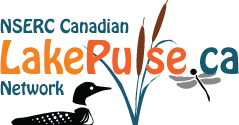Theme leader: Beatrix Beisner, Université du Québec à Montréal (UQAM)
Project 5: Microbial contamination in Canadian lakes – risks for human and animal health
Project leader: Andrew Lang, Memorial University of Newfoundland
Summary: This project will quantify and map the risk for human and animal health related to the microbial contamination of Canadian lakes by influenza virus, coliforms and antimicrobial resistance. It will focus on three different types of microbial contamination that can be of concern to human and animal health, and that are expected to vary according to land use surrounding the lakes. The three microbial contaminants being assessed are: 1) bacterial contamination, as measured by coliforms; 2) viral contamination, as measured by influenza virus; and 3) contamination by antimicrobial resistant bacteria. The relationships between environmental and climate variables, lake properties, and the microbial contamination will then be explored using statistical and epidemiological methods. With these analyses, we will quantify the combined associations between catchment land-use characteristics, lake characteristics, climate and weather on the occurrence of microbial contaminants. The main outcome of this project is to find indicators of risks for human and animal health that characterize the current status of Canadian lakes and to project impacts of climate and other environmental changes into the future.
Project 6.1: Understanding the information obtained from the “one-shot” large-scale sampling of lakes (LakePulse survey) using the autonomous mooring data
Project leader: Yannick Huot, Université de Sherbrooke
Summary: The LakePulse survey plans on sampling most of the lakes only once between mid-July and end of August relying on comparison across large spatial scales to discern patterns of change in lake health. This project aims at evaluating and quantifying the limits of this approach for assessing the health of individual lakes and groups of lakes. This project will rely on autonomous mooring time series in addition to the lake pulse components.
Project 6.2: Assessment of anthropogenic influences on the structure and function of plankton communities across the lakes of Canada
Project leader: David Walsh, Concordia University
Summary: Freshwater plankton communities are comprised of a wide diversity of life forms, ranging from microorganisms to metazoan zooplankton. The ability of plankton to respond rapidly to environmental change suggests they may serve as useful indicators of anthropogenic impacts in lake ecosystems. Such an idea has been recognized for some time and there are a few plankton groups (i.e. diatoms) that serve as effective metrics for water quality. However, given the vast genetic and functional diversity that underlies plankton communities, the existence of additional useful plankton indicators of change is likely. Hence, the objective of this project is to advance our basic understanding of how the taxonomic and functional diversity of plankton communities vary across gradients of human influences in lakes across Canada. This approach will be complemented for the zooplankton project (PhD11) with an analysis of subfossil zooplankton in the top-bottoms of sediments from lake cores. Through this fundamental research we will be able to inform our end users on the links between environmental stressors and plankton community structure and function, and make recommendations on the use of additional indicators (including antibiotic resistance markers) for monitoring lake health status.
Project 6.3: Cyanobacteria distribution and dynamics
Project leader: Irene Gregory-Eaves, McGill University
Summary: This project will take advantage of both contemporary water column and historical sediment samples collected in the LSSL to understand the drivers of cyanobacteria and their toxins over a wide range of Canadian lakes. We will quantify how cyanobacteria functional groups have changed over time and across spatial gradients that exist in the current landscape, by applying hierarchical modelling techniques to quantify regional differences (building on preliminary work conducted in Beaulieu et al., 2014 and Taranu et al. 2017).
Based a preliminary analysis of Canada cyanobacterial survey data, we found that nutrients were the best predictors of cyanobacterial biomass (Beaulieu et al. 2014) and there were no significant model differences across 3 regions. However, data were missing from many parts of Canada and we did not have adequately taxonomically resolved data to address how community composition and its drivers varied across Canada (e.g., potentially toxic forms, potential N fixers). Furthermore, some paleolimnological work has been done in a few sites in Canada (Taranu et al. 2015), but there are no data in many parts of Canada. Finally, we will conduct microcystin analyses for LSSL sites to quantify its abundance and drivers across lakes.
